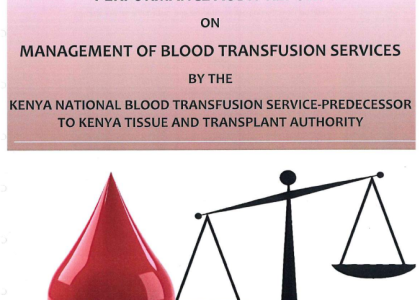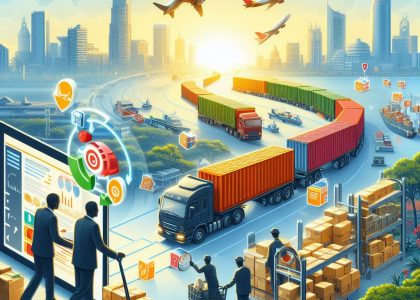 Sustainability in Supply Chain
Sustainability in Supply Chain
Limits to sustainability are established in business and policy by physical and natural resources, environmental deterioration, and social resources.
As a result, sustainable policies emphasize the long-term impact of any given policy or corporate practice on people, the economy, and the environment. The idea frequently corresponds to the conviction that unless big changes are made to the way the world is run, it would deteriorate irreversibly.
The importance of sustainability in supply chain extends beyond going green.
A sustainable supply chain also helps improve productivity while saving money at the same time. By using sustainable techniques and resources, one can increase the efficiency of buildings, vehicles and machinery at a significant cost savings.
Three components of sustainably in supply chains
1. Green supply chain and sustainably in supply chains
A green supply chain is achieved by successfully integrating environmentally responsible principles and benchmarks into supply chain management. This includes product design, materials sourcing, manufacturing, logistics, and end-of-life product management.
With the rise of e-commerce, there are more product and shopping choices than ever. To compete, businesses need to find resilient solutions to greening their supply chains while still growing profit. Supply chain technologies such as AI and machine learning can help businesses spot risks, patterns, and opportunities – allowing them to minimize waste and improve efficiency.
2. Transparent supply chain and sustainably in supply chains
Supply chain transparency refers to the ability and willingness of a business to openly disclose information about the provenance of goods and labor and end-to-end supply chain practices. Many businesses invest significant time and resources into establishing and maintaining ethical and environmentally responsible standards. The problem is, even with the best of intentions, this has traditionally been very difficult to enforce and reliably implement. Fortunately, through the use of digital technologies such as blockchain and RFID sensors, supply chain managers can now obtain an accurate and irrefutable record of all the products and suppliers along the entire supply chain journey.
3. Circular supply chain and sustainably in supply chains
In a circular supply chain, products are disassembled or reduced to their raw materials form, and remade into sellable products – thus allowing businesses to achieve the environmental benefits of recycling while recouping costs in the process. The win-win nature of this model is growing in popularity, and, according to a 2020 Gartner survey, 70% of supply chain leaders plan to invest in the circular economy. Some of the modern technologies that support these initiatives include the use of recycled plastics in 3D printing and the ability for advanced analytics to map out the most efficient logistics journeys for returning products into the supply chain loop.
Technology components of a sustainably in supply chain.
Digital transformation in the supply chain allows companies to meet and exceed sustainability benchmarks while also innovating and growing their businesses.
Artificial intelligence:
AI technologies allow for the curation and analysis of multiple, disparate data sets across the supply chain. A particularly powerful benefit that AI brings to the sustainable supply chain is the capacity for synchromodality and collaborative shipping. This means tracking the status and location of packages to take real-time advantage of opportunities to combine shipments or utilize less resource-heavy logistics if time permits.
Machine learning:
As an application of AI, machine learning uses Big Data to help systems and connected devices adapt in real time – to discover patterns, learn from experience, and automate agile and responsive workflows. For supply chain managers, the operational optimization measures that come out of this process can significantly reduce waste and energy usage.
Robots and automated things:
Online shopping has risen by over 149% since the start of 2020. With many customers expecting fast or next-day delivery, we are pushing the existing capacity of warehousing and last-mile logistics provision to its breaking point. Electronic drones and inventory management robots are examples of automated things that can be optimized with intelligent automation to improve workflow efficiency, optimize energy, and save on fossil fuel usage in the logistics network.
Additive manufacturing:
Also known as 3D printing, additive manufacturing allows companies to maintain virtual inventories and to manufacture stock on demand. The ability to manufacture on-site and on-demand eliminates fossil fuel usage and other resources used in overseas shipping and packing. It also has the potential to use recycled plastics from within the supply chain loop as the base material for 3D manufacturing.
Industrial Internet of Things (IIoT):
When connected devices and machines within a business are fitted with unique identifiers and the ability to send and receive digital data, they become part of an IIoT network. Asset intelligence in a sustainable supply chain can help to optimize machine performance and automate maintenance to reduce energy usage and eliminate redundancies in workflows.
Blockchain:
In sustainable supply chains, blockchain is particularly useful in its ability to act as a single source of truth. Through the use of sensors, products and materials can be accurately tracked back to their source to remove any speculation as to their provenance, quality, and handling – at any stage across the supply chain.
Sensors:
RFID devices and other small, inexpensive sensors can easily be fitted to products and raw materials – at their source or anywhere along the supply chain. When partners and suppliers comply with mandatory sensor attachment, an unprecedented level of transparency is achieved – especially in regions that may have previously been somewhat hard to reliably monitor.
Modern databases and ERP:
The best sustainability in supply chain solutions run on in-memory databases and ERP systems that can manage Big Data and diverse, complex processes. The technologies and automated components of a sustainable supply chain are dependent upon predictive and advanced analytics as well as on the real-time insights made possible by these modern, centralized business systems.
Source: SAP
Learn more on sustainability in supply chain.

Join our reddit community here or ecosystem groups here
{“title”:”Share.”}




